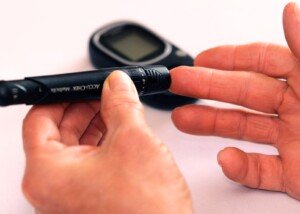
A normal A1C is always good news, but what if it comes with a fasting glucose of 109, which is in the so-called prediabetic range?
“A fasting glucose is a snapshot of what someone’s blood sugar is at that exact moment,” begins J. Mark Anderson, MD, DABFM, of Executive Medicine of Texas and who is board certified in family medicine.
“It can show that someone has an increased risk of diabetes, but it’s not necessarily diagnostic,” continues Dr. Anderson.
“That is why many healthcare providers will routinely collect an A1C during a physical exam or if there is a concern about diabetes.
“An A1C is a blood test that looks at the amount of glycated hemoglobin (glucose bound to hemoglobin), giving a better long-term evaluation of your blood sugars.
“Generally, it paints the picture of your blood sugar over the past two to three months.
“It’s best to have an A1C of 5.6 or less. 5.7-6.4 is considered prediabetes and 6.5 or greater is considered diabetic level.”
Fasting Glucose of 109: What this Might Mean
As Dr. Anderson mentioned, the fasting glucose number reflects a snapshot in time, but this doesn’t mean you should kick it under the rug, either.
Years ago my fasting glucose was a little less than 109; it was 106.
The medical document said I had “impaired glucose metabolism,” even though I had not been given an A1C text.
This diagnosis was very premature. It sent me into a tizzy and I pursued more information via medical journals, where I learned that a fasting glucose can be elevated (prediabetic range) just from a single night of bad sleep, let alone many nights of poor sleep over a period of weeks.
Chronic anxiety can also boost fasting glucose numbers into the low 100’s.
It was no coincidence that I had gotten only a few hours’ sleep preceding the morning of my test, and that for the several weeks prior I had been struggling with sleep due to significant anxiety over a sick family member. The daytime stress added to the equation.
I’ve had many fasting glucose readings since, and all have been in the 80’s. My A1C tests have all been normal.
So if you have a fasting glucose (aka blood sugar) of around 109 but a normal A1C, this is no cause for worry.
However, consider it a wakeup call to your stress levels, sleep quality, dietary habits and exercise.
It’s tough to avoid stress and anxiety, but you should do all you can to choose your battles in life wisely rather than stress your mind out over trite matters.
Limit processed foods as much as possible and hit the gym hard.
A healthy diet and rigorous exercise will go a long way at preventing type 2 diabetes and an abnormal A1c.

Dr. Anderson is coauthor of the award-winning book, “Stay Young: 10 Proven Steps to Ultimate Health,” and host of the nationally syndicated Staying Young Show which goes to podcast as Staying Young Show 2.0.
 Lorra Garrick has been covering medical, fitness and cybersecurity topics for many years, having written thousands of articles for print magazines and websites, including as a ghostwriter. She’s also a former ACE-certified personal trainer.
Lorra Garrick has been covering medical, fitness and cybersecurity topics for many years, having written thousands of articles for print magazines and websites, including as a ghostwriter. She’s also a former ACE-certified personal trainer.
.


























